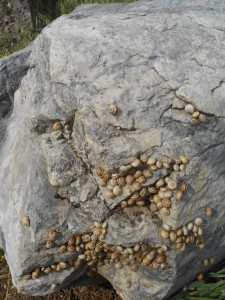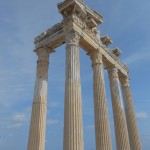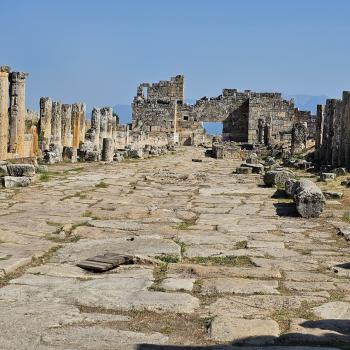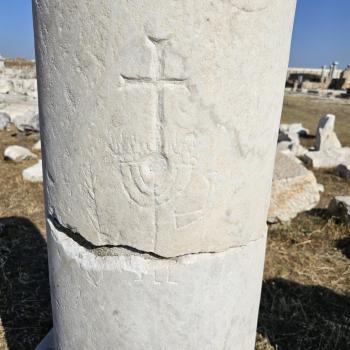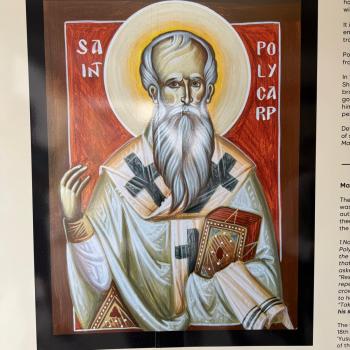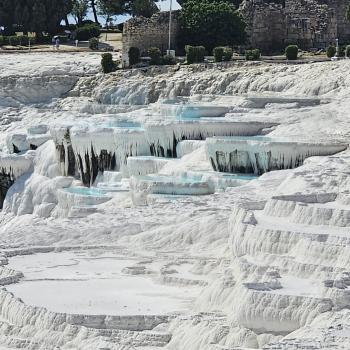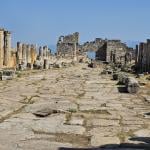Life in the antique Greco-Roman world often moved at a snail’s pace.
And one of the major problems in antiquity was water, fresh water, especially in the Mediterranean where, in most places the rains stop in the late spring, and do not show up again until late Fall or Winter. This problem was compounded by the necessity of having defensible cities, which not surprisingly were often built, at least in part on high hills, acropoli. But this made the water problem even worse. Take for instance the city of Aspendos near Antalya. It had a very high acropolis….. which in turn required mammoth aqueducts to supply it with water on an ongoing basis. Roman aqueducts are some of the engineering marvels of the whole ancient world, just as much as say the pyramids in many ways, though they will not be on anyone’s list of the seven wonders of the world. Take a close look at these shots of the gigantic aqueduct on the back side of Aspendos…

When you think of the engineering calculations required to provide an angle of inclination high enough to make water constantly run downhill into an ancient acropolis, it becomes increasingly clear that while it may be true that soldiers won the battles to create an Empire, it was mainly the engineers, before during and afterwards who built the structures and infrastructures of the Empire.
All this Paul saw and yet he was still able to say, standing next to an aqueduct like this “the ‘schema’ (form) of this world is passing away…..” (1 Cor. 7). It may be built to last, but it’s not everlasting, and that’s what humans are in need of the most.


